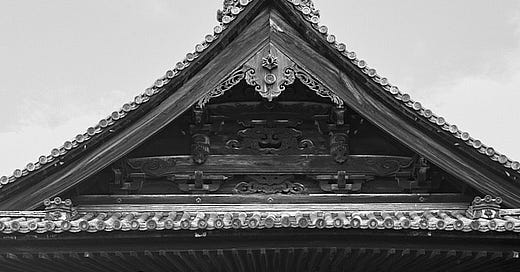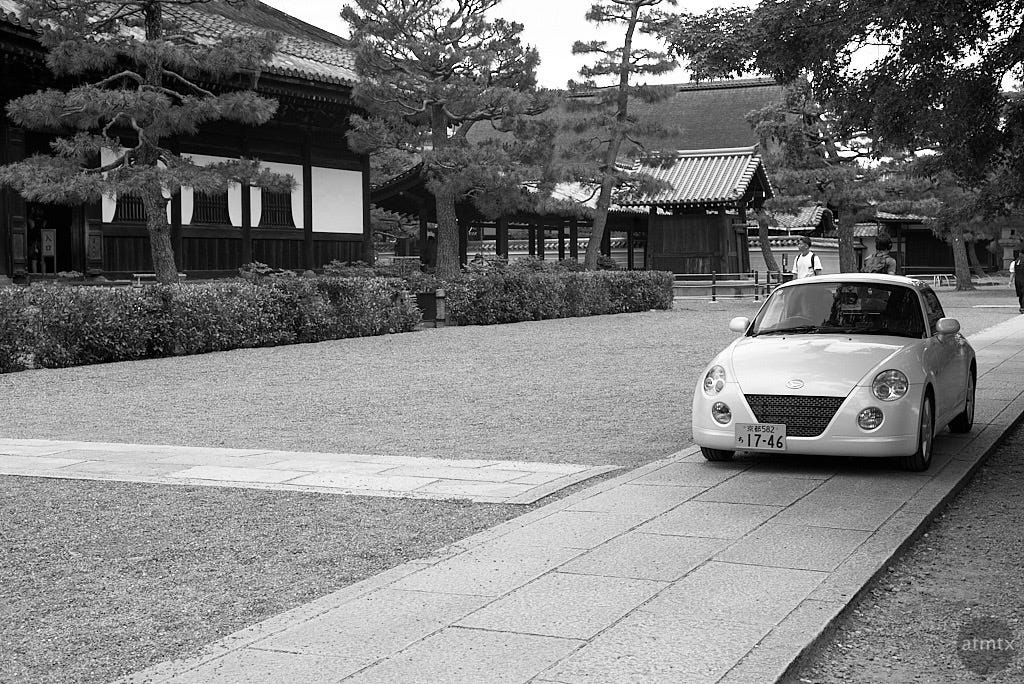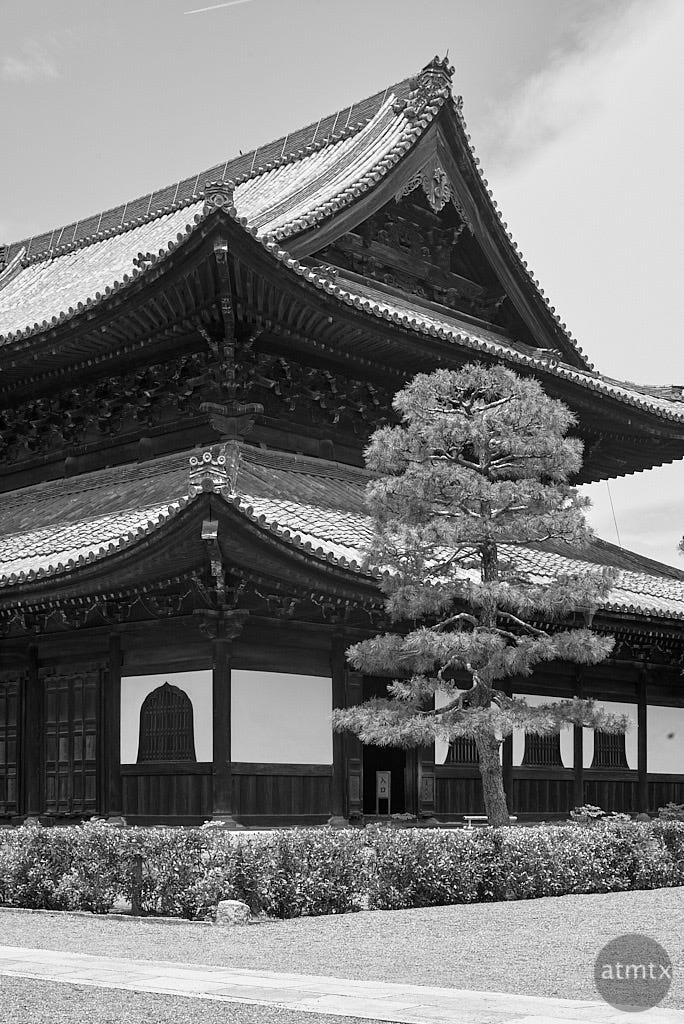The first test of the Leica M Monochrom in Kyoto
Historic Kyoto was the first opportunity to test my recently purchased M 246
I purchased the Leica M 246 on a whim, which is unusual for me. But given the flux caused by potential tariffs cascading down to the used market and the relative rarity of a very cleanly used specimen at a reputable reseller, Leica Store Miami, I jumped at the chance. That was just a couple of weeks before my trip to Japan. Thus, when I broke out the M Monochom in Kyoto, it was my first real test of the camera.
I got off the train and headed directly to the Gion neighborhood in Kyoto, known for historic buildings, elusive geisha, and majestic temples. I was heading to a camera store but shot these scenes before the establishment opened.
Kennin-ji Temple made for a worthy and easy test of the camera, manually focusing the 55-year-old Leica 50mm f2 Summicon. The meticulously trimmed pine tree contrasted wonderfully with the ancient wooden structure.
Rickshaws, which derived their name from the Japanese Jinrikisha, made for a perfect foreground subject, though they were more challenging to shoot than stationary architecture. I decreased the aperture to f8, making it easier to zone focus. Smaller apertures have a deeper depth of field, so focusing doesn’t have to be as precise.
We don’t have such tiny cars like this in the United States, but they are common in crowded, narrow streets in Japan. This model looks particularly cute and contrasts nicely with the traditional Japanese temple architecture.
I probably shot this somewhere between f8 and f11, making it quick to tweak focus and frame this shot as the car drove past.
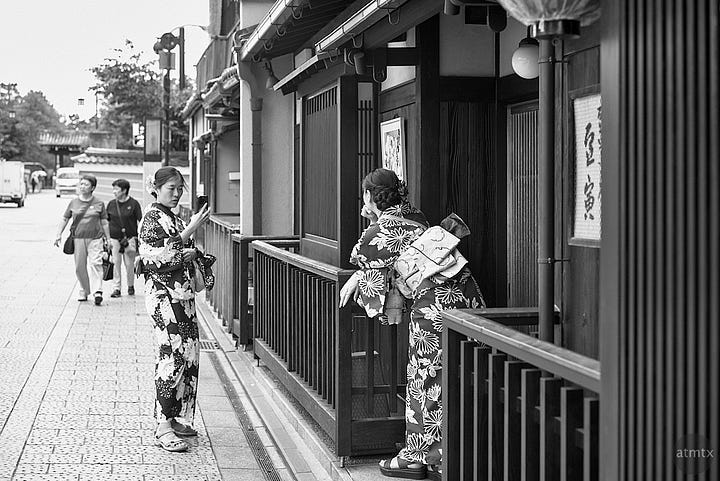
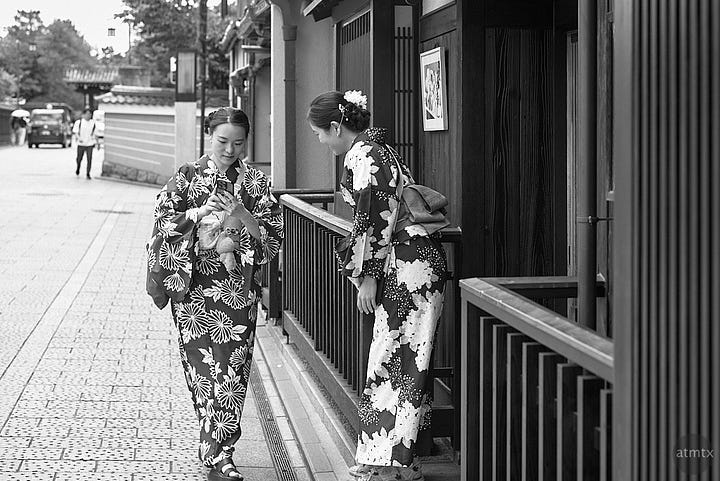
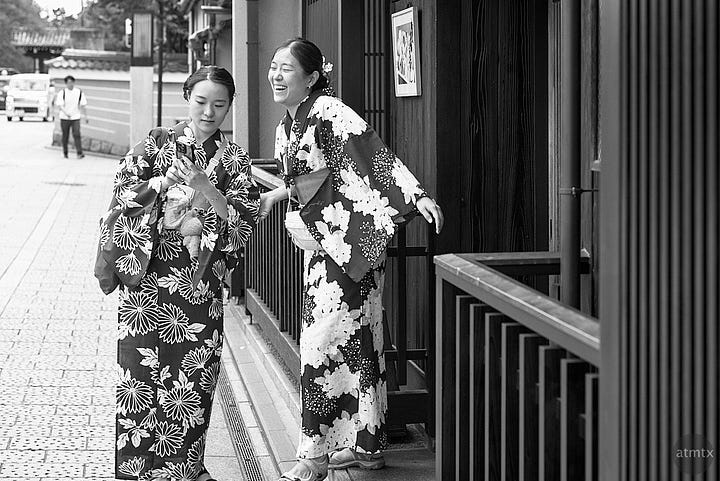
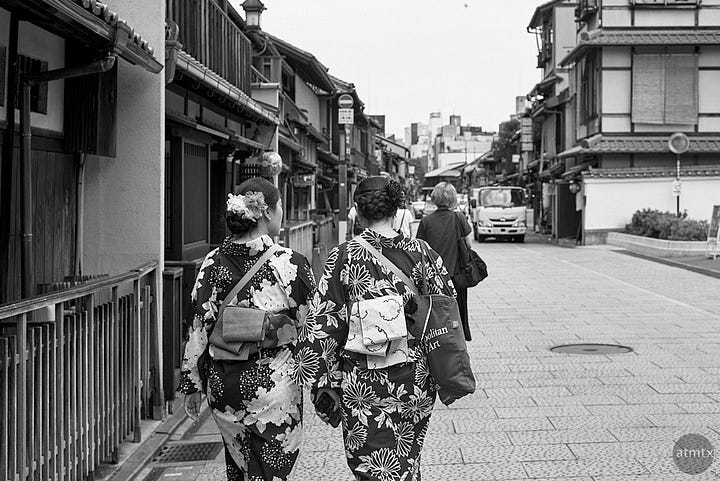
We are back on a main street in Gion, where I spotted tourists wearing kimono. I would have preferred to use a larger aperture, which would have softened the background; however, I wanted to quickly capture these pictures. I used a smaller aperture again to allow me to focus swiftly without being detected.
It’s not unusual to use f8 for street photography. Using a very large aperture risks not having both subjects in focus. The other benefit of a smaller aperture is faster zone focusing. This is a style of photography that I’m just beginning to practice. But, the manual focus Leica Ms makes this more enjoyable than typical auto-focus cameras.
I’ll finish the post with another picture from Kennin-ji Temple. I really enjoyed slowly and precisely framing these stationary subjects, and the 50mm allowed me to isolate details. Manually focusing and being careful not to overexpose the monochrome images slows down the process, which makes me feel like I’m more deliberate in the picture-making process. Deliberate photography is a stark contrast to the fast autofocus photography that I employ with my other cameras, such as the Leica D-Lux 8 and Sony cameras.


